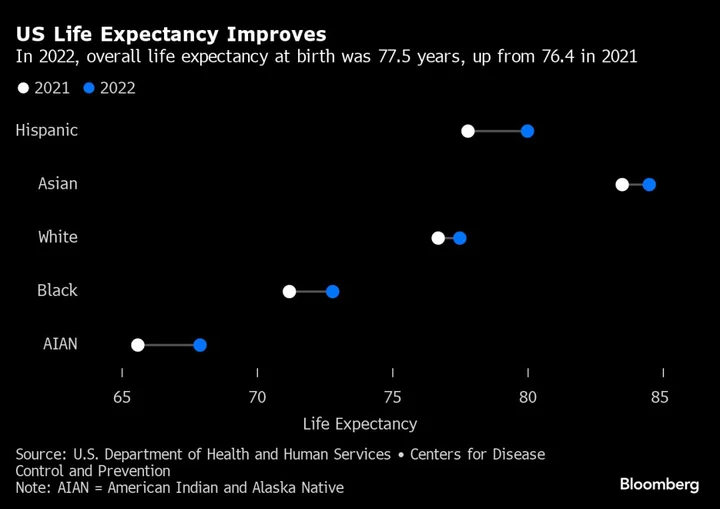Girls and boys born in the US last year both saw their life expectancy improve, the first increases since the pandemic.
That’s according to 2022 provisional estimates from the US Department of Health and Human Services. Life expectancy at birth was 77.5 years — an increase of 1.1 years from 2021 — as fewer people died from Covid-19.
A female born last year can once again expect to live more than 80 years while a male should live nearly 75 years. The gap between the two narrowed to 5.4 years after reaching the widest margin since 1996 during the pandemic.
Life expectancy at birth represents the average number of years an infant would live. The improvement was primarily driven by a drop in Covid deaths, but decreases in heart disease and cancer mortality also helped.
There’s still more ground to recover to get back to pre-pandemic levels. In 2019, average life expectancy was 78.8 years. In the two years following the onset of the pandemic, life expectancy had the biggest back-to-back decline in a century.
Life expectancy rose for all races in 2022. Asian and Hispanic people can both expect to live at least 80 years — longer than White, Black and American Indian and Alaska Native people.
The difference by gender was widest among non-Hispanic Black Americans, with a Black woman expected to live 76.5 years compared to 69.1 years for a Black man.
The White population experienced the smallest increase in life expectancy. A White male is expected to live 75.1 years at birth versus 80.1 years for women.
Life expectancy rebounded in spite of a surge in suicides last year. They rose 3% to almost 49,500, a record, according to provisional US data from the Centers for Disease Control and Prevention. The rate of suicide in the population was the highest since 1941.









